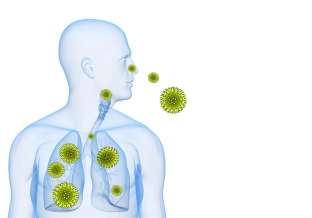Everyone is looking forward to the coming of spring, the first sun and warm days. After a long winter, you really want to quickly take off your warm clothes and go for a walk in your favorite park or square, breathe clean air and inhale the first aromas of flowering plants. But in the spring season, the very first walk in the park can end in an unpleasant surprise: the onset of allergic rhinitis. Runny nose, sneezing and coughing are immediately perceived as signs of a respiratory disease, and they are treated accordingly, but that's just the treatment – Does not help. What symptoms of allergic rhinitis will help to distinguish it from acute respiratory infections – read on estet-portal.com.
What symptoms of allergic rhinitis will help to distinguish it from a cold
Allergic rhinitis is a disease that is caused by chronic allergic inflammation that occurs in the mucous membrane of the nasal passages. Inhalation of allergens that are in the air in the spring season, and leads to the development of an inflammatory reaction in the nasal mucosa. Allergic rhinitis is a very widespread disease, the first signs of which most often appear in childhood. During puberty, the allergy becomes less pronounced, and by the age of 20-40, its symptoms increase significantly. That is why the symptoms of allergic rhinitis that occurs spontaneously in an adult are often perceived as signs of a cold.
Symptoms of allergic rhinitis:
- typical or persistent symptoms of allergic rhinitis;
- symptoms of allergic rhinitis, which rarely occur;
- ARI symptoms that do not occur with allergic rhinitis.
Typical or persistent symptoms of allergic rhinitis
Among the symptoms of allergic rhinitis, there are typical or persistent signs that almost always accompany an allergic reaction, as well as signs that do not always occur. Typical symptoms of allergic rhinitis include:
- swelling of the mucous membrane of the nasal passages;
- presence of copious, thin, clear or whitish discharge from the nose;
- sneezing and itching in the nose, which occur instantly upon contact with the allergen;
- feeling sore throat;
- dry cough resulting from nasal mucus running down the back of the throat;
- hoarse voice.
Symptoms of allergic rhinitis that rarely occur
Less persistent symptoms of allergic rhinitis may include:
- pain syndrome: pain in the head and in the area of the paranasal sinuses;
- nosebleeds;
- "allergic salute" - a specific gesture when a person rubs the tip of the nose with his palm from the bottom up, trying to reduce itching and ease breathing through the nose;
- the presence of a transverse fold between the bridge of the nose and the tip of the nose, which is formed with a long time existing allergic rhinitis as a result of constant rubbing of the tip of the nose, and disappears when pressure is applied to it from above;
- adenoid face: the expression of a person with allergic rhinitis appears sleepy, his mouth is almost constantly open, dark circles are observed under the eyes;
- Danny's lines – specific folds under the lower eyelids that appear in childhood and also indicate the presence of allergic rhinitis.

ARI symptoms that do not occur with allergic rhinitis
If you can't figure out which disease your symptoms are pointing to, check to see if you have the typical signs of acute respiratory disease that allergic rhinitis does not have. These include:
- increase in body temperature;
- the presence of an intoxication syndrome: general weakness of the body, poor appetite, nausea and vomiting, stool disorders, excessive sweating;
- pain in muscles and joints;
- wet cough with sputum production;
- yellowish or yellowish-green nasal discharge.
Remember that only a qualified specialist can establish a reliable diagnosis after conducting the necessary diagnostic tests.






Add a comment